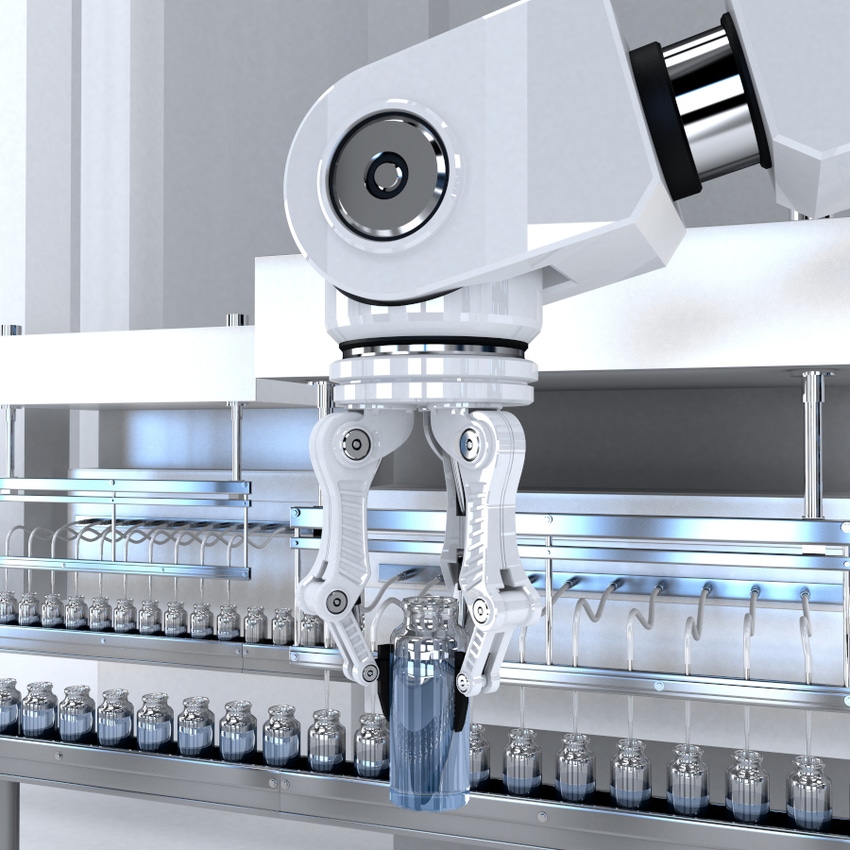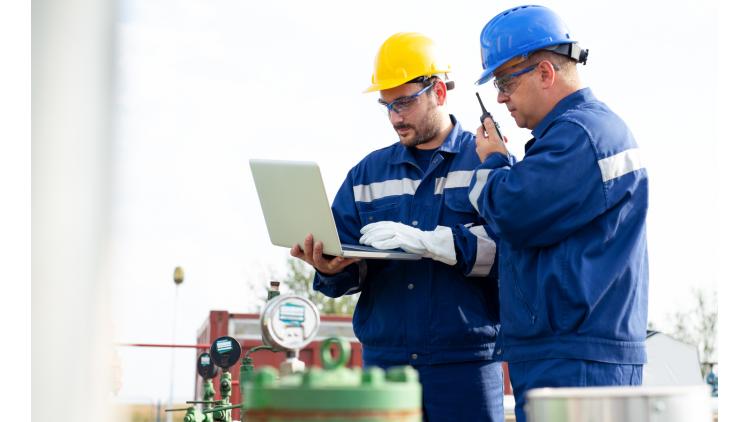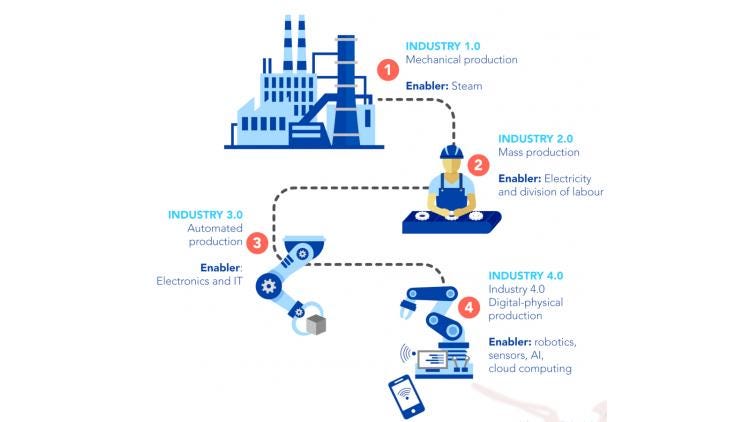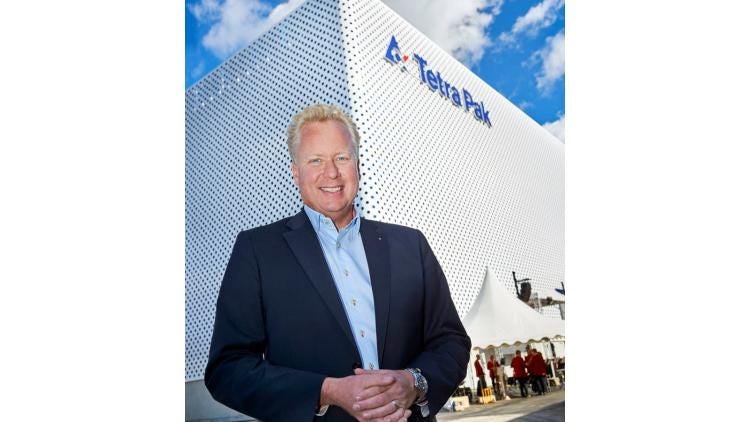AI in packaging: Defining terms, assessing impact—Part 1
May 14, 2019

How data science intersects with machine engineering for smarter and more valuable packaging operations.
Spend a little time investigating the impact of artificial intelligence (AI) on packaging equipment and processing lines and it quickly becomes apparent the improvements AI holds for higher efficiencies, better quality and improved safety are just emerging.
AI covers a number of engineering-related goals: better predictive maintenance, the concept of zero downtime, clear traceability related to standards compliance and increased worker engagement. Indeed, “smart” devices—such as motors, controllers, sensors and more imparting improved algorithms to robots, conveyors, checkweighers and entire packaging lines—promise to engage workers rather than replace them. “Automate tasks, not replace workers” is the mantra.
“We still remain far from general AI that can wholly take over complex tasks, but we have now entered the realm of AI-augmented work and decision science—what we call ‘augmented intelligence,'” Chris Howard, distinguished research vp at research organization Gartner, says. “If you are a CIO and your organization doesn’t use AI, chances are high that your competitors do and this should be a concern.”
So what is AI and what is its impact on packaging? Says Chuck Lewin, president of Performance Motion Devices (Westford, MA): “AI is a set of data-processing techniques that go beyond traditional algorithms connecting cause and effect, observation and action, to a higher level of processing emphasizing pattern recognition, adaptive control and prediction.
“In the context of packaging equipment, AI operates in three steps,” he continues. “It inputs data from sensors, analyzes that data and then alters its own operation based on the results of that analysis. The key is collecting a lot of data, even of variables that may not be directly related to the process being controlled.
“As applied to packaging equipment, AI will improve system performance in several key areas,” he says. “Lines will handle a wider range of incoming materials, they will provide more precise inspection of the materials they handle and they will monitor their own behavior so that required maintenance can be predicted.”

Better-engaged human resources, not robot factories, should be the goal of any packaging operation looking to implement AI.
AI drivers
Like anything, AI doesn’t exist in a vacuum. Today, AI is reaching a historical moment because of six converging factors:
1. Bigger data: Many devices have given us a gold mine’s worth of data to process, both structured (in databases and spreadsheets) and unstructured (such as text, audio, video and images). As trillions of sensors are deployed in manufacturing and manufactured products alike, “big data” will only get bigger. AI-assisted processing of this information allows us to handle this data to uncover historical patterns, predict more efficiently, make real-time adjustments and more.
2. Processing power: Accelerating technologies such as cloud computing and graphics processing units have made it cheaper and faster to handle large volumes of data with complex AI-empowered systems through parallel processing. In the future, “deep learning” chips—a key focus of research today—will push parallel computation further.
3. A connected globe: Global manufacturing supply chains together with social media platforms have fundamentally changed how individuals interact and what information they can expect and when. Increased connectivity via the Internet of Things (IoT) is accelerating the spread of information and encouraging the sharing of knowledge. An emerging “collective intelligence” will include open-source communities developing AI tools and sharing applications.
4. Open-source software and data: Open-source software and protocols are accelerating the democratization and use of AI, as can be seen in the popularity of open-source machine-learning standards and platforms. An open-source approach can mean less time spent on routine coding, industry standardization and wider application of emerging AI tools.
5. Improved algorithms: Researchers have made advances in several aspects of AI, particularly in “deep learning,” which involves layers of neural networks, designed in a fashion inspired by the human brain’s approach to processing information. Another emerging area of research is “deep reinforcement” in which the AI agent learns with little or no initial input data, by trial and error optimized by a reward function.

AI and enabling factors like cloud computing and the Internet of Things help comprise Industry 4.0. Image courtesy of Tetra Pak.
All kinds of AI
The spectrum of AI definitions and focus is also expanding and now includes:
• Automated intelligence systems that take repeated, labor-intensive tasks requiring intelligence, and automatically complete them.
• Assisted intelligence systems that review and reveal patterns in historical data, such as unstructured social-media posts, and help people perform tasks more quickly and better.
• Augmented intelligence systems that use AI to help people understand and predict an uncertain future.
• Autonomous intelligence systems that automate decision-making without human intervention. “As applied to packaging equipment AI will improve system performance in several key areas; they will handle a wider range of incoming materials, they will provide more precise inspection of the materials they handle and they will monitor their own behavior so that required maintenance can be predicted,” Lewin says.
• Algorithmic intelligence (a.k.a. Smart Devices) is perhaps closest to our attempt to define and discuss AI in packaging equipment and applications. Dr. Rashmi Misra, general manager for AI business development at Microsoft, added algorithmic intelligence to the list of AI definitions in a conference keynote last November.
Dr. Misra describes AI as integral to the ongoing industrial transformation from physical production assets and systems to digital smart products and connected enterprises. AI-enabled analytics are at the heart of a digital feedback loop taking operational data, product telemetries, and employee and customer feedback—and delivering more efficient operations, better products, more effective employees and deeper customer relationships. “Modern manufacturers are embracing customer centricity, innovating faster and becoming more agile,” she says.
In June 2018, Microsoft announced its acquisition of Bonsai, based in Berkley, CA. The company is building a general-purpose, deep-reinforcement learning platform especially suited for enterprises leveraging industrial control systems. This includes unique machine-teaching innovations, automated model generation and management, as well as pre-built support for leading simulations.
“Using Bonsai��’s AI Platform and machine teaching, subject matter experts from Siemens, with no AI expertise, trained an AI model to auto-calibrate a computer numerical control (CNC) machine 30 times faster than the traditional approach. This represented a huge milestone in industrial AI, and the implications when considered across the broader sector are just staggering,” said the company in a press release.
In the recent “Industry 4.0: Opening a door to new opportunities for the food and beverage industry” white paper, authors from Tetra Pak see AI as central to ongoing advances like machine learning: “What makes machine learning useful is that the algorithm can ‘learn’ and adapt its outputs based on new information. The sheer volume of information produced means such tools are needed to produce quick, almost instantaneous analysis beyond the capability of a human alone. Using the information gathered, algorithms can number-crunch both past and current activity, and predict optimum plant operation for the future by learning from what is going on in the present.”
Indeed, at the global industrial technology trade show Hannover Messe earlier this year, Johan Nilsson, who heads Tetra Pak Services, announced that AI and human/machine collaboration is at the heart of the company’s Factory of the Future initiative. “Machines will be able to communicate with each other as well as with the digital systems of the entire operation, automatically taking on tasks such as diagnosing problems, ordering and delivering parts, and looking for an engineer who is most suitable for the service needed,” Nilsson said in a press release. “Supported by these smart solutions, the workforce will be able to focus on managing the plant, making quick, informed decisions and continuously increasing the speed of production, reducing errors and minimizing product waste.”

Improved human/machine collaboration is at the heart of Tetra Pak’s Factory of the Future, according to Johan Nilsson, CEO, Tetra Pak Services. Image courtesy of Tetra Pak.
More examples of the impact of AI on packaging will follow in Part 2 of this article series.
Ray Chalmers is founder and principal at Chalmers Industrial Communications, providing writing services for industrial technology providers since 2007. His career includes 10 years as an editor with the Society of Manufacturing Engineers and time as a staff editor on Packaging.
********************************************************************************
EastPack 2019 (June 11-13) is the region's premier packaging event connecting professionals from companies like PepsiCo, Pepperidge Farms and Mars with suppliers offering the latest packaging technologies, including a range of automation solutions, from semi-automatic equipment to sophisticated "smart" systems. Register to attend today!
About the Author(s)
You May Also Like


